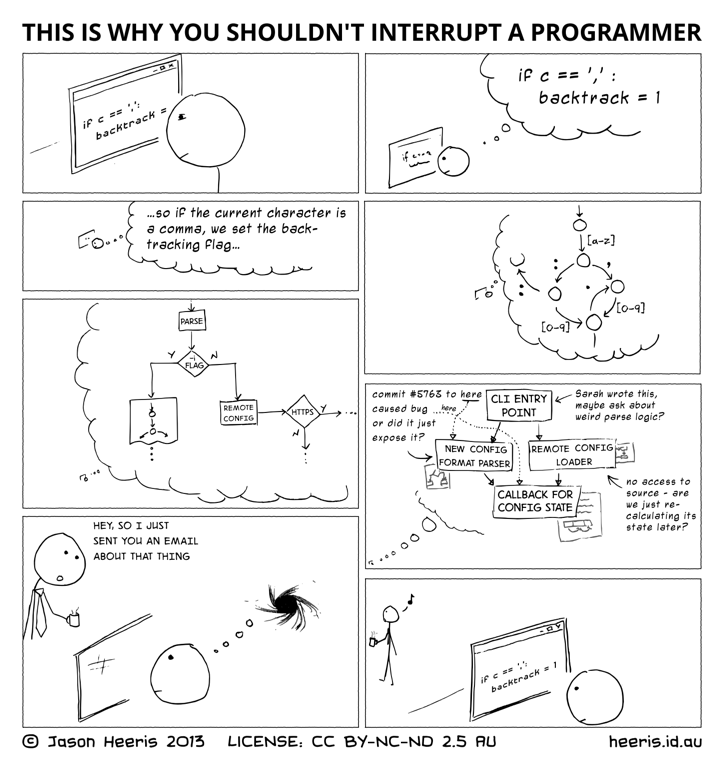Bridging the Gap Between Tech and Non-Tech - A Marketer’s Perspective
It was 2011 and I had just started working for a web company in its IT sector. My role was one of the less “defined” ones, at the confluence of sales and tech, a bit the middle-man amongst departments that were in tacit conflict. There was always at least one project sold under a misunderstanding or misrepresentation.
When pointing out an impending disaster to the directors (such as a project being undersold, or us being unprepared and understaffed to complete it on time), they would take the sales rep’s side because “he is the one who brings the money in, certainly not the devs.” Yet it was the devs who were turning those projects into concrete realities. It was the devs who should have been consulted for an in depth requirements analysis and a correct time cost evaluation, for sales to evaluate the money cost from there on. The departments, however, avoided communicating with each other whenever they could, assuming the other’s affairs were secondary to their own. They both overestimated their grasp on the other team’s skills and endeavors.
Now try for the sake of discussion to put yourself into a CIO’s shoes. Picture your IT department. What will your first thoughts be? Will you lament the money the department has wasted, or linger on frustration due to poor results, delays and bitter compromises? What measures should you take?
Business First, Tech Later - Or Is It?
Corporations teach that IT must be run like a business, with CIOs as business leaders, not technology pundits. Investments into IT should be spurred by business strategy. Nevertheless, at the 360 IT infrastructure event in London in 2010, with the recession causing a shift in IT roles and responsibilities, the general sentiment was that IT is very much a "changing face of business.” Attendees seemed to acknowledge the necessity of developing oneself and one’s staff into well-rounded, “business-savvy and technically-skilled” workers.
The results of the McKinsey study on over 800 global businesses executives say adoption of digitization and automation technologies has accelerated especially during the pandemic. This is telling with the growing need for IT and their execs to work together, as the lack of adapting to the raid changes could be a major reason for missed opportunities for revenue growth and reduced customer engagement and satisfaction. 34 percent of the Business respondents in the survey dubbed their relationship with IT as “combative, distrustful or siloed”, and almost just as many on the IT side agreed.
Perhaps the best solution is for both sales and marketing departments to better their technical knowledge, and for tech teams to improve their administrative and marketing knowledge?
The Middle Ground: An Insight on How To
Belinda Yung-Rubke, director of Field Marketing at Visual Network Systems, is sure the answer sits in finding a common language and setting up common objectives, while Jimmy Augustine of Hewlett Packard urges a forceful bridging of the IT and Business gap. “The two should be one, like peanut butter and jelly. The right hand should know what the left hand is thinking and vice versa.”
Jeff Tash, CEO of Flashmap Systems, Inc and author of the free Architecture Resource Repository Site, recommends a three-step approach to bridging this gap: Consolidate, Standardize, Communicate. Initially, this involves eliminating redundancies, reducing resources, and aiming for reusable products and services instead of one-offs.
Most important is the final step, communication. Marketers and techies can often speak completely different languages. One group talks about B2B, B2C, CPCs, CPMs, DMOs, PPAs, PPCs, ROI, and UGC, and the other talks about HTML, CSS, JS, SQL, XML, JSON, IDEs, and APIs. It’s important to define a common vocabulary, so that no one is nodding along in meetings without any idea of what the discussion is about. Tash recommends to “make certain that both technical and non-technical audiences share a unified knowledge base” to ensure a dialogue of ideas, rather than a monologue.
We often see an expectation for techies to speak the marketer’s language, but not the other way around. In Vish Mulchand’s opinion, "the bosses you have to get the budget from don't care about the technical side of why you're pitching for a certain investment; they want to know how it will improve the business and grow revenue, so the tech guys need to know how to communicate this."
It can be difficult for marketers to find motivation to learn tech language, but it can lead to more independent and self-sufficient behavior. In larger organizations, a simple typo fix can take weeks to make its way through bureaucracy. In smaller agencies and startups, you can usually just tap a developer on the shoulder and ask him to fix it. But consider the fact that even a one-minute interruption can require10–15 minutes of ramp-up to resume working. With a little effort, marketers can learn just enough to be able to make small changes like these, avoiding bureaucracy and keeping developers focused and efficient.

It might be wise to take a leaf from the startup world in this regard, where the lines between marketing, product and development become blurred. Instead of treating different aspects of a project as silos, marking territory, and making sure no-one crosses borders, all of these different aspects are treated as offensive weapons to win in the market.